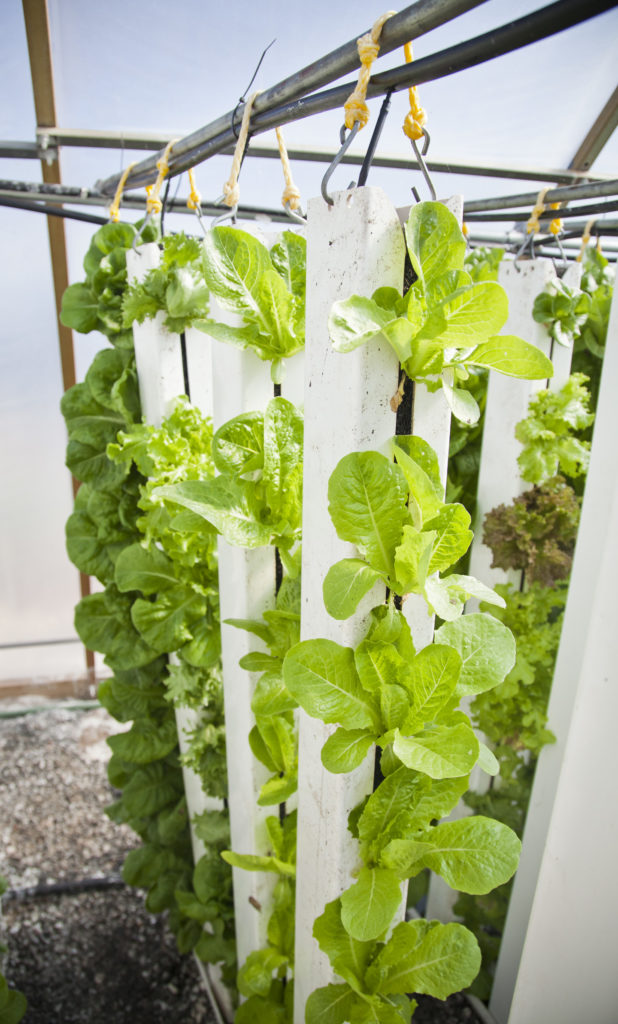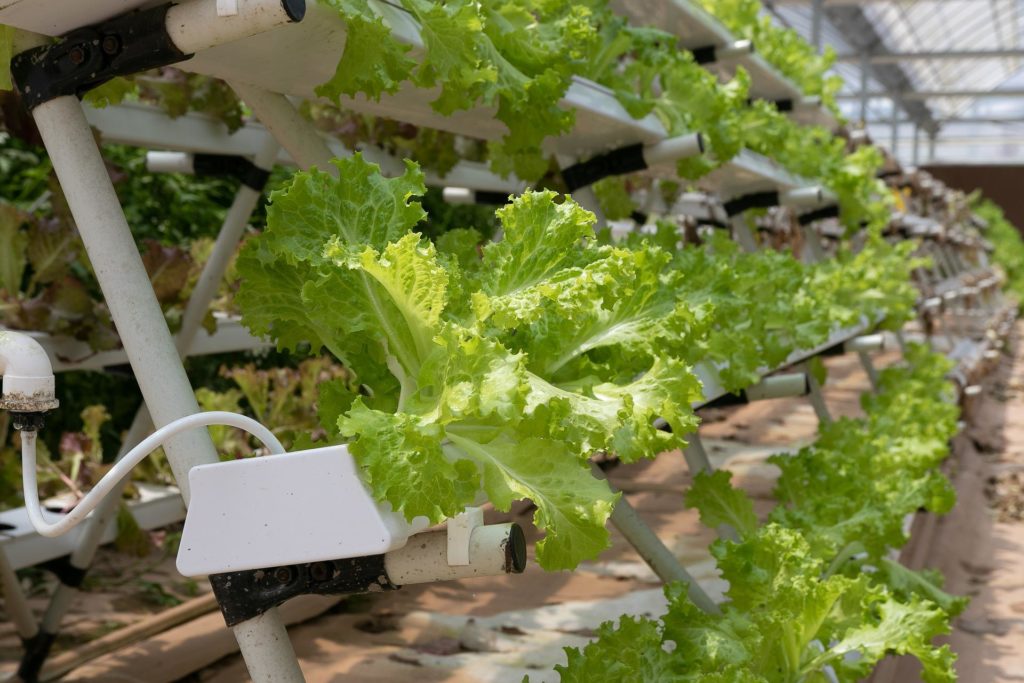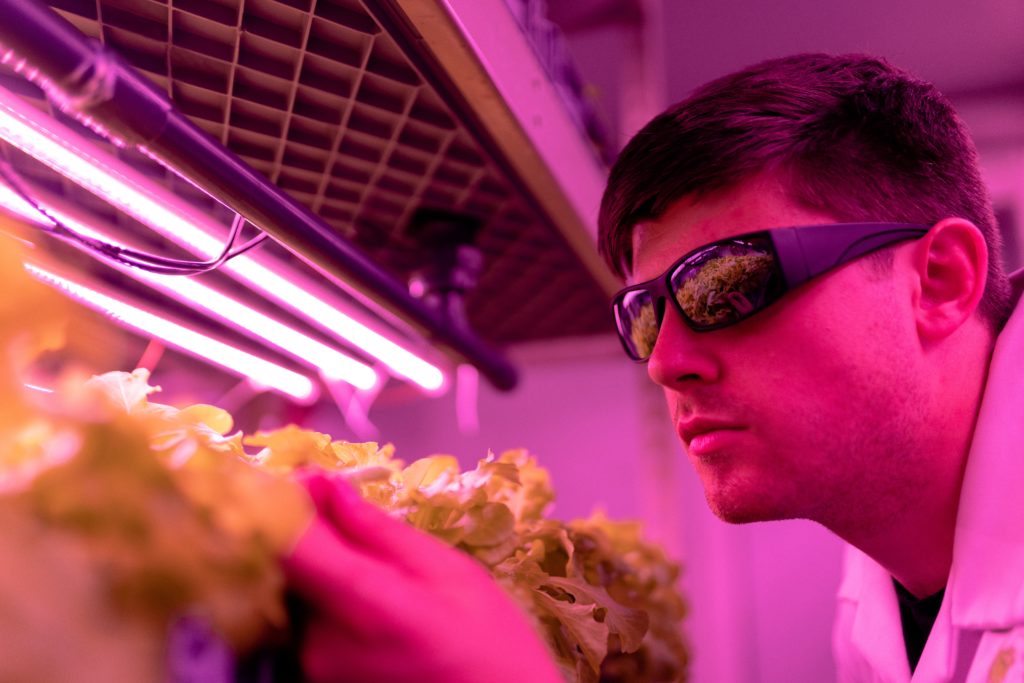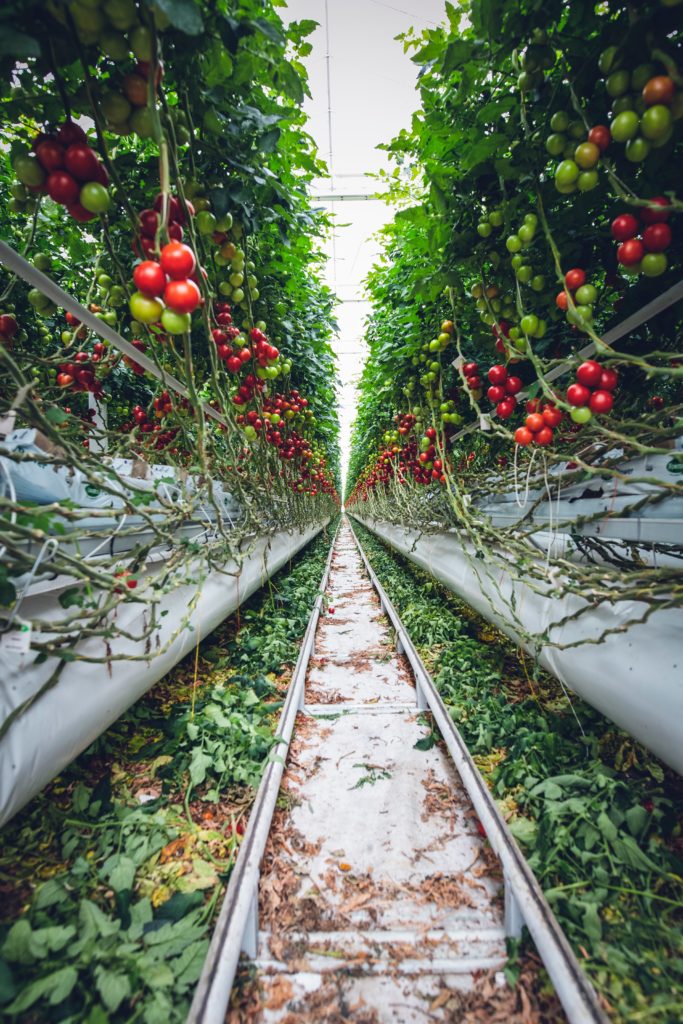Vertical urban farming is a new concept developed to feed growing urban populations without relying on shrinking amounts of arable land. Currently, about half the global population lives in urban areas, and this number is only increasing. By 2050 this number could exceed 6 billion people living in urban areas.
Growing food through urban farming means fresh produce will need to travel only a handful of miles to reach the end consumer. Not only does this decrease the energy required to get food where it needs to go, but it also increases food security. With highly efficient farming solutions, urban agriculture can be a solution to a rapidly growing population.
This isn’t to say that urban farming is perfect, and currently, there are a lot of challenges holding it back. While much more food can be produced in a small space, high costs and general challenges are also a part of being a new industry.
This article is a part of a series about urban agriculture and environmentally friendly growing methods, find an article about Vertical Growing Methods here with more to come.
What Are The Benefits Of Vertical Farming In An Urban Environment?
Vertical farming might seem like a Sci-Fi idea with proposed concepts involving massive skyscrapers with floors of green produce grown. While this reality may be a few years away from being commonplace, some cities are starting to grow food with indoor vertical farming,
As technology improves and the population grows, traditional farming begins to fall behind urban agriculture, mainly when farming vertically. Even with basic vertical farming systems, it is possible to achieve 10x the production of traditional methods in the same space. With more significant buildings, there is no limit to how much product could be grown in a single acre, unlike conventional agriculture.
Below are four of the most significant benefits of vertical urban farming and why vertical farmers might become the agriculture industry’s future.

1. No Need For Cross Country Transportation
The term “food miles” refers to how many miles food travels from the producer to the consumer. The average distance food travels to consumers is 1500 miles for fresh produce, which can range significantly depending on the time of year and the crop in question. Food miles account for 14% of the energy used for food production, which is no insignificant amount.
By farming within an urban environment, consumers live only a few miles from where food is grown. This reduces food miles, emissions, and fossil fuel usage. Ideally, urban farming can reach a large population in 15 miles or less, traveling 1% of the distance compared to current methods.
Growing more herbs and greens year-round with indoor farming means that people have fresh food locally rather than relying on imports during the winter months. Using controlled environment agriculture means that the growing season is not limited but consistent year-round.
Not needing to transport the crops for days means the consumers can enjoy the freshest produce available. Short shelf life and high turnover fruits and vegetables work best for this method including lettuce, herbs, tomatoes, strawberries, peppers, and other leafy greens.
2. Efficient Usage Of Limited Space
The total amount of land available on the Earth is not changing, but the entire population is. Of that land, only so much is arable, and only so many areas are available for people to live in. Large urban areas can support a large population but not so much farmable land.
To get around the challenges of limited space, the answer is going up. Vertical farming offers a solution to growing crops with limited square footage. Different vertical farming methods work well for different crops so having a floor dedicated to specific crops offers a lot of flexibility and efficiency.
Even for small producers, using a single room or warehouse, vertical farming dramatically increases the possible output. Combining vertical growing with hydroponics systems means that a producer can grow lettuce in half the time and 5-10 times the growing space in the same square feet.
Maximizing square footage in an urban environment is incredibly important since space is so limited. But the best part is any building can be adapted for vertical farming, turning abandoned warehouses and commercial buildings into highly productive urban farms.

3. Increased Food Security With Vertical Urban Farming
One of the most recent examples of why urban farming can be an essential tool is seeing how quickly the food supply chain can suffer. In 2020 when Covid-19 was in full swing, the supply chain was impacted, and there were shortages across the country as transportation and the available stock suffered.
By no longer relying on a delicate supply chain to get from point A to point B and instead prioritizing local food, the overall food security is increased. Between high gas prices, natural disasters, and other unknowns having as few moving parts to make food available can only benefit society.
Urban vertical farming offers another benefit to food security: scalability. It is much easier to build or repurpose another building for food production than it is to find more farmland. Farmland is continuously being repurposed for residential development as populations expand.
Between scalability and fewer moving parts to reach the end consumer, vertical urban farming is an excellent solution to some of the weak points of the current agriculture system.
4. Fully Contained Systems- No Runoff, No Pollution
Conventional farming leaves a significant environmental impact between toxic runoff, high water usage, and high fossil fuel usage, and agriculture is one of the leading reasons for deforestation globally.
Vertical urban farming solves most of these issues by using a self-contained system. Water usage is much lower in hydroponics farming than in traditional farming through recirculating systems.
Controlled environment agriculture also reduces chemical pollution by lowering the need for most pesticides and herbicides, which can leech into water supplies in traditional farming.
One of the most significant benefits of using a fully contained system is that any fertilizers you use won’t go to waste. Using a recirculating system means that all the nutrients go directly to the plants, and nowhere else.
This means when using nutrients like Green House Feeding’s Grow or another fertilizer of choice, you are maximizing use of water and fertilizer, wasting as little as possible, and minimizing the impact on the environment.

Areas For Improving Vertical Urban Farming
While vertical urban farming has a lot of benefits in feeding as many people as possible and combating some of the ways traditional farming contributes to climate change, it is not perfect.
The food production from urban farming is much more expensive, limited, and not as perfected as traditional farming. Agriculture has been done mostly the same way for hundreds of years with technology improving the methods and lowering costs, and it is nearly perfected.
Vertical urban farming methods, however, are new and relatively unexplored, leaving plenty of room for improvement. If you are looking at getting started in this field, here are four of the biggest roadblocks you’ll have to consider.
1. High Costs Can Keep Commercial Vertical Urban Farming Down
High costs are the number one reason that most vertical farming companies fail. While paying for electricity for artificial light is expensive, it isn’t the biggest increased cost over traditional farming.
Labor is the single most expensive cost to grow food in vertical systems
Purchasing the equipment and space and paying for everything to be set up are all high upfront costs that lead to a high barrier of entry currently, but the biggest struggle for turning a profit is the cost of labor. Because of the unique challenges of growing in vertical systems and indoors, almost all of the work needs to be done by hand.
The equipment developed to make conventional farming so efficient that a single farmer can farm thousands of acres doesn’t exist quite yet for urban agriculture. Working in small spaces limits the size of equipment that can be used and requires precise work.
Several startups are working on automating the process and using AI and robots to maintain and harvest plants in indoor farming. Once this technology has been improved and the price lowers, we will see more automated farms, but for now, the average producer is priced out from using it.
The work involved also requires a reasonable amount of knowledge, coupled with the higher costs of living in urban environments, which means that paying local living wages cuts into possible profits.
A successful business model must focus on reducing costs in other areas. Using energy-efficient, highly versatile lights such as the Dimlux Xtreme 500W grow lights will save you money in energy bills.

2. Vertical Urban Farming Is Not Suitable For All Crops
Another drawback of vertical farming is that not everything can be grown in these systems. Sure, lettuce and herbs thrive in hydroponic environments, but it is nearly impossible to make the space required to grow any useable amount of wheat, corn, or other row crops. Traditional growing methods will always reign supreme for row crops and vertical farming won’t be changing that any time soon.
Producing the majority of food for an urban population using urban farming is a tall ask, so without any significant changes to people’s diets, a lot of food will still need to be transported and processed. Even with the most futuristic buildings set up solely to grow food, there is still a limit to what is able to be produced.
High turnover produce that requires minimal space is the current limitation on what is feasible to grow in these environments. While this could change in the future with more space dedicated to urban farming, right now, urban vertical farming needs to stick with what it is good at.
3. Limited Industry Experience And Size
Since the industries of vertical farming, hydroponics, aeroponics, and aquaponics are still reasonably new, there is a limited amount of knowledge in the field.
You’ll see a stark contrast if you compare the traditional farm outputs in the US to global vertical farming revenue. Globally, the revenue in the vertical farming industry is around $1-3 billion, while farms produced $135 billion of crops in a trillion-dollar industry. Large corporations are hesitant to jump in without the financial backing to make vertical farming attractive to investors.
The limited number of individuals with significant experience and knowledge makes it more challenging to expand large-scale operations. Without enough dedicated and knowledgeable experts to work on a farm, vertical farms will fail even in their best environments.
Long-lasting vertical farms are few and far between, and there is a disconnect between academic and real work studies and business. People constantly learn new information, develop new technologies, and improve existing strategies.
Since vertical farming has only been around in its current form for a few decades, only a few people have taken the time to experiment with things, so the knowledge generally comes from a few sources. As more people enter the industry, we’ll see more successes and failures that we can use to gauge how best to move forward.

4. Lack Of Government Support
Government subsidies play a massive part in global food production, especially in the United States. Midwest row crop producers of corn and soybeans rely on several government programs, which account for 20% of income in average years, and 40% when farming is tough.
These kinds of programs don’t exist yet for vertical urban farming. Sure there are some grants and USDA loans to help cover costs, but the volume of financial support given to conventional farming methods far exceeds new methods.
Competing with the low prices of subsidized agriculture is difficult for urban farmers who suffer from other high costs. Selling wholesale to grocery stores often makes it difficult for urban farming, and going direct to the consumer is usually the best way to make a profit.
When Will Vertical Urban Farming Really Take Off?
While predicting an exact year that vertical farms will really take off isn’t possible, it’s a safe assumption that in the next 30 years there will need to be an agriculture revolution to support the massive population growth.
Large companies worldwide are just starting to invest in vertical farming, and the places it is taking off share similarities: large populations, cheap labor, and limited farmable land nearby. In Dubai ECO 1 recently opened, the largest indoor vertical farming facility in the world, and in Luzerne County, PA another large facility is set to open in 2023.
Already we are starting to see leaps towards success in the industry and risks being taken, but the future is promising for vertical urban farming. Large farms are being built to produce millions of pounds a year, but this is still just a drop in the bucket. Any of these four main conditions must be met for vertical urban farming to take over.
1. Government Support For Vertical Agriculture Matches Traditional Methods
The politics of government subsidies is a topic too complex for this article. Still, it is something that will need to change to support vertical farming to the same degree as conventional farming. In the US government subsidies currently only go to corn, soybeans, wheat, cotton, and rice, four out of five of which are heavily used in processed foods.
Suppose the government was to offer support for crops not commonly used for processed foods and provide incentives to grow in urban environments. In that case, an agricultural shift could occur and feed more people with local produce.
2. Climate Change Continues To Destroy Row Crops
Climate disasters are becoming increasingly common in recent years, resulting in billions of dollars in crops destroyed worldwide through droughts, floods, and other weather problems. Vertical farms however, are much less prone to be affected by natural disasters due to their controlled environments.
By using a fraction of the water, and more consistent yields, vertical farming offers solutions to challenging growing conditions that are becoming more common every year.
3. Food Prices Increase To Make Vertical Farming More Profitable
As with any business, the more money available, the more people will enter the industry. Profitability is one of the most significant factors holding back this method of farming, and once food prices cross a certain threshold then producers will jump in.
Any number of factors that affect traditional agriculture could drive up the price of food to make vertical farming take over. Fuel, scarcity, and increased demand are the most likely price-driving factors, but others could do the same.
4. Arable Land No Longer Supplies Enough To Meet Demands
There is no consistent agreement among researchers about what “peak agricultural land” is but the general consensus is that we have passed that point. Advancements in GMOs, fertilizers, and equipment means that we are producing more food every year, but the amount of land we are farming is dropping.
Globally, farmland is being replaced with residential use and environmental preservation, which means that once we can’t grow enough for the population, alternative methods will be required. Changes in diets, increased vertical farming, and more GMOs will all be used, but vertical urban agriculture offers the most room for improvement.
Final Words
Vertical urban farming uses some unique concepts and technologies and applies them to feed the world with limited resources; however, it will likely remain a niche market until current food producers have run out of options and need to find a more sustainable way to produce food.
Necessity is truly the mother of invention, and as of right now it is hard to see how necessary vertical farming is for the future. However, be rest assured that people are working towards the solution and you can be a part of it.
